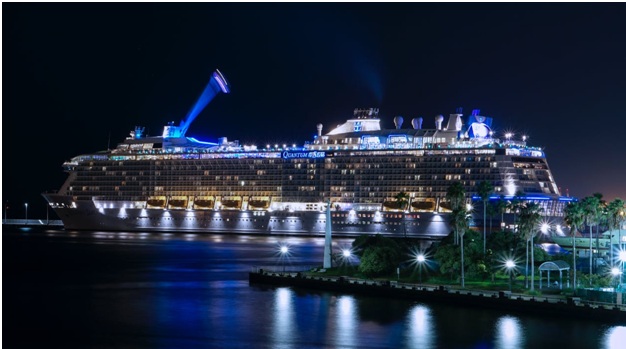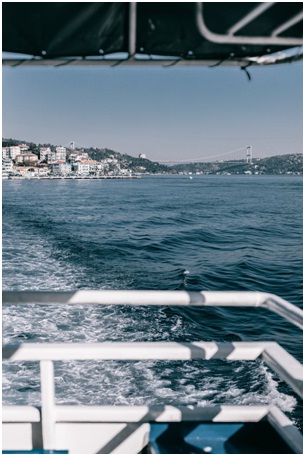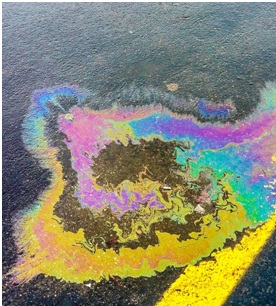Why Is Flexibility So Important in Marine Electrical Cable?
2nd Mar 2021

Whether you’re well educated in electrical engineering and electronics or not, if you have a boat, you’ll have to become familiar with the specifics of marine electrical cable at some point or other. It’s just a good practice to develop a sense of familiarity with the features of your boat and its associated equipment - knowing what you’re working with will make you more confident on the water and a better informed owner.
Either that, or you’ll need to defer all of your electrical work to a qualified electrician, and there’s nothing wrong with that. Still, for those who are still interested in the topic, and have heard that marine electrical cable should be engineered to be as flexible as possible, we offer the following read.
Life Aboard a Ship (or a Boat)
So you’ve heard that marine grade electrical cable should be as flexible as possible, and in fact, is actually designed to be. That much is true, and if you’re wondering why, we have the answer for you.
For most of us, there is no life aboard a ship, or aboard a boat for that matter. Most recreational boaters are day boaters or day sailers, spending a few hours on the water during the course of a day and then returning to the slip (or the trailer) by nightfall or shortly thereafter. For us, life on a boat is just a few bits and pieces of recreation cobbled together that intersperse the rest of life - which takes place ashore.
For commercial sailors, life on a ship is more grueling and will last for weeks or months at a time between making port. These sailors have to learn to adapt to demanding schedules and restricted living conditions. Yet even the dedication of these people can’t match life at sea for marine grade cable.
For marine grade cable, life at sea is actually life at sea. There is no making port or landing ashore. Marine grade cables have to contend with the worst conditions that the ocean can throw at them - and there is no respite.
In short, one of the most important qualities of marine grade battery cable and other marine grade wire is that it be as flexible as possible - all the time. Since there’s no break in the action of the demands, here are some of the top reasons that marine wiring needs to be flexible.
Tight Spaces Require Flexible Marine Electrical Cable
Even if a boat or a ship was permanently drydocked and never came within a day’s journey of the open ocean, marine cables and wires would need to be very flexible. To illustrate this point we’re going to have to ask you to reflect on your own experiences.
Have you ever had to spend a night in the cabin in the v-berth of a small, recreational vessel? If so, among other things, you’re likely to have noticed just how cramped it was - for a person. That’s because of an uncomfortable truth; boats are designed to be seaworthy first and comfortable second.
On that note, have you ever served as the crew of a commercial vessel or a ship of the line? Even if you haven’t, there’s a chance you may have come aboard a ship in port or a museum ship at some point in your life. Here as elsewhere, these ships are designed to squeeze as much room as possible from their confines. Quarters are tight, at best, and passageways are narrow, low and unforgiving.
That’s just a quick illustration of how cramped things are on a ship for the ship’s crew and inhabitants. Life behind the scenes is even more cramped.
Ships and boats have even less room among their infrastructure for vital electrical equipment and other components of their systems. Engineers have to make sure to get everything within a ship’s engine compartments, behind electrical panels and hooked up to the batteries and they don’t have a lot of space to do it. There’s even less space within the hull itself - but wire stills need to traverse these tight areas to provide power to lights and nodes of the ship’s (or boat’s) systems.
This is the first reason that marine electrical cable needs to be uncommonly flexible. There just isn’t a lot of room on board a ship to make ends meet and the room that there is is not forgiving. Does the cable need to make a hard right turn to get around a beam or some other structure within the hull? Does the cable need to navigate tight, demanding curves?
These are rhetorical questions - in almost all cases, they do. You can’t bend the structure of the ship to meet the needs of electrical cable. Therefore, the cable itself needs to be flexible enough to accommodate the demands of the ship.
That is the first and probably the more important reason that marine grade cables need to be flexible. There just isn’t a lot of room in marine environments, so cables need to be adaptable. This is also the reason that other specialty cables, like welding cables, should also be as flexible as possible - because they need to be managed on job sites and must be flexible enough to do so.

However, marine environments can throw a lot more at electrical infrastructure, and as we said, marine cables are at sea all of the time. They also need to be flexible for a few more key reasons.
Constant Vibration from the Engine(s)
Sailing vessels won’t necessarily have to contend with the constant vibrations from the engines, but obligate sailing vessels are becoming nearly nonexistent. Those that remain may not even have functional electrical systems.
However, the bulk of vessels are not sailing vessels - and among these, all commercial vessels nowadays are powered anyway. That means that there’s another stressor that’s going to be making its way toward marine electrical and battery cables - the constant vibrations from the engines.
While it’s somewhat obvious that a marine cable must be flexible because it has to be able to get around a boat’s curves and recesses, the entire vessel will be subjected to the stress of the engines; this is more of a concern on smaller vessels, but it still does place an appreciable strain on the boat’s infrastructure. In this case, flexibility is better.
Constant Environmental Stressors
There’s one more, even better reason that marine cables need to be as flexible as is realistically possible, and it’s the motion of the waves. Even a boat at harbor or permanently moored will be exposed to the forces of movement, however minor. Vessels, in this respect, are different from buildings because they need to be able to expand and flex as they move over the water, or as the water moves under them. This has been a key point of shipbuilding since before recorded history - ships need to be strong.
But it’s not solely the physical structure of the ship that must be flexible. True, expansion joints and other features are built into ships in order to make them better able to cope with a changing environment, but as the boat rocks, pitches, generally vibrates with the stress of making way, the rest of it must also be able to roll with the proverbial punches - or perhaps, in this case, to roll with the waves is a better expression.
In some instances, it might actually be the flexibility of the cable itself that is the saving grace. Cable itself is heavy, and even though it is well supported in electrical infrastructure, flexibility can be instrumental in establishing and maintaining connections. In this instance, establishing a connection in the first place is a vital function of flexibility, and maintaining it becomes a function of flexibility afterward.
Is Flexibility All You Need?
These are some of the most important reasons that marine electrical cable needs to be as flexible as possible, but flexibility is only one of the most crucial traits of marine grade cable. In addition to flexibility, marine wire and cable needs to be as resistant as possible to corrosion.
The reason for this should be fairly matter of fact, but to illustrate the point, consider the following. Have you ever been by the ocean or the coast and taken note of any exposed metal work? If you haven’t ever done so before, keep your eyes peeled for it in the future. Sooner or later, you’re going to notice exposed metal work that was not properly treated. At least, at some point, it won’t have been properly treated. By the time you notice it, it will probably be a moldering pile of rust.
Steel is common in structural applications, and steel rusts because it is reactive; electrical conductors are not made of steel or iron because these metals have very high resistance and overheat rapidly and dangerously when current is passed through them. For this reason, electrical conductors are usually made from copper, which is much better for electrical applications and offers much lower resistance than steel and iron.
However, and unfortunately, copper is just as reactive as iron, and marine environments highlight this like no other. Copper fares no better than iron in the face of seawater or salt spray. Exposed copper and iron will turn red and green like Christmas lights after only a short tango with a marine environment. For that reason, marine grade cables must be made as resistant to corrosion as possible. See below to learn more about how this is accomplished and what we offer in our own marine grade cables.
What Our Marine Electrical Cable Offers
Now that you have a firsthand understanding of just why marine electrical cables need to be flexible and corrosion resistant. Here is how we accomplish that with our marine grade cables.
-High Strand Count:
The first way we ensure highly flexible marine grade cables is by manufacturing them with as high a strand count as is possible. The higher the strand count, the more flexible a cable can be, because each individual strand will be thinner and therefore easier to bend. Single stranded conductors (wires) would quickly become impossible to work with in larger gauges.
-Individually Tinned Copper Conductors:
When it comes to corrosion resistance, marine grade cables like ours have a special trick up their sleeves. Take a look at some of those that we offer here on our site and you’ll notice they look like aluminum cables. They’re not - but they do look silver because each and every copper strand is individually tinned to resist corrosion. Copper may not be resistant, but tin definitely is, and tinning each strand lets them hold up much better.

-Not Just Resistant to Saltwater:
In addition to being resistant to saltwater, our marine grade cables are also resistant to a number of factors that are commonly encountered in marine environments. For example, many of our marine cables are resistant to oil and gasoline that are often present, as well as resistant to both acids and alkali metals and materials. Naturally, they are also resistant to moisture.
-Durable, Flexible Insulation:
Our marine grade cables are made with durable, highly flexible insulation that improves not only the flexibility but also the resistance of the entire outfit. The insulation we use is tough yet resilient, which significantly improves flexibility and corrosion resistance.
-ABYC and USCG Approval:
Many of our marine grade electrical cables are approved by the American Boat and Yacht Council, the United States Coast Guard, as well as having the Underwriters Laboratory Listing-Seal.
Contact Us for Help!
Still want to learn more about what makes our marine electrical cable the best there is? Want to learn more about why marine grade cable needs to be flexible? Just give us a call and we’d be happy to help! You can reach us at 800-262-1598 - we love hearing from our customers and we’d love the chance to answer your questions about our high quality products.
If you prefer email, you can send us a message at sales@ewcswire.com, and you might even be able to catch us via the live chat feature on our homepage.
